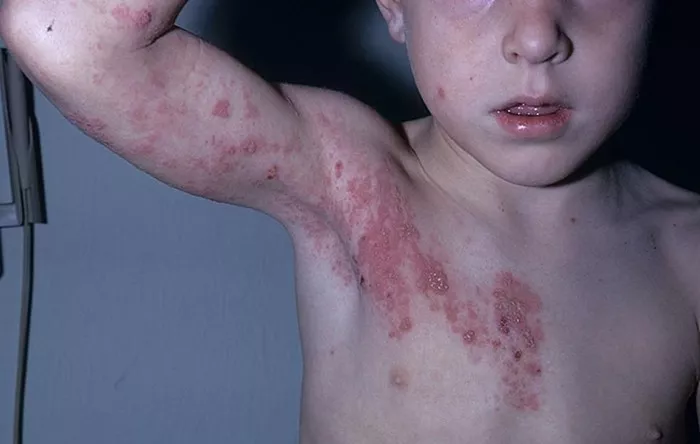Shingles, medically known as herpes zoster, is a viral infection caused by the varicella-zoster virus, the same virus that causes chickenpox. It typically manifests as a painful rash with blisters on one side of the body, often accompanied by itching, burning, and tingling sensations. While shingles itself is not contagious, the varicella-zoster virus can be transmitted from individuals with active shingles to those who have never had chickenpox or the varicella vaccine, leading to the development of chickenpox in susceptible individuals. Understanding the contagious period of shingles is crucial for preventing the spread of the virus and protecting vulnerable populations.
The Contagious Period: Unraveling the Timeline
The contagious period of shingles refers to the duration during which the virus can be transmitted to others. Unlike chickenpox, which is highly contagious and can be spread through respiratory droplets or direct contact with the rash, shingles is less contagious and requires direct contact with the fluid from the shingles blisters for transmission to occur.
The contagious period of shingles begins with the appearance of the rash and persists until the rash crusts over completely. This typically occurs within 7 to 10 days after the rash first appears. During this time, the fluid within the blisters contains the live varicella-zoster virus, making it capable of infecting others who come into contact with it.
It is important to note that individuals with shingles are most contagious when the rash is in the blistering stage, as the fluid-filled blisters contain the highest concentration of the virus. As the rash progresses and the blisters begin to crust over, the risk of transmission decreases. Once all the blisters have crusted over and no new blisters are forming, the contagious period ends.
Factors Affecting Contagiousness
Several factors can influence the contagiousness of shingles and the likelihood of transmitting the virus to others:
1. Severity of the Rash: The severity of the shingles rash can vary from person to person. Individuals with more extensive or severe rashes may have a higher viral load and be more contagious than those with milder cases.
2. Immune System Status: The immune system plays a crucial role in controlling the replication of the varicella-zoster virus. Individuals with weakened immune systems, such as those undergoing chemotherapy or living with HIV/AIDS, may shed the virus for a longer duration and be more contagious than those with intact immune function.
3. Prompt Treatment: Early initiation of antiviral treatment for shingles can help shorten the duration of symptoms and reduce the risk of complications. Timely treatment may also decrease the duration of viral shedding and the contagious period.
4. Personal Hygiene Practices: Practicing good personal hygiene, such as frequent handwashing and avoiding close contact with individuals who are at higher risk of complications from chickenpox, can help prevent the spread of the virus.
Preventing Transmission
Preventing the transmission of the varicella-zoster virus from individuals with shingles to susceptible individuals is essential for reducing the burden of disease and protecting vulnerable populations. Several measures can be taken to minimize the risk of transmission:
1. Avoid Close Contact: Individuals with shingles should avoid close contact with individuals who have never had chickenpox or the varicella vaccine, particularly those who are at higher risk of severe complications, such as pregnant women, newborns, and individuals with weakened immune systems.
2. Cover the Rash: Keeping the shingles rash covered with a clean, dry bandage can help prevent the spread of the virus to others. Avoiding scratching the rash can also minimize the risk of rupturing the blisters and releasing infectious fluid.
3. Practice Good Hygiene: Practicing good personal hygiene, including frequent handwashing with soap and water, can help reduce the risk of spreading the virus to others. Avoid sharing personal items, such as towels or clothing, with individuals who have shingles.
4. Vaccination: The varicella vaccine is highly effective at preventing chickenpox and reducing the risk of developing shingles later in life. Vaccination is recommended for all children and adults who have not had chickenpox or received the vaccine previously.
Conclusion
In conclusion, understanding the contagious period of shingles is essential for preventing the spread of the varicella-zoster virus and protecting vulnerable populations from the complications of chickenpox. The contagious period begins with the appearance of the rash and persists until the rash crusts over completely, typically lasting 7 to 10 days. During this time, individuals with shingles should take precautions to minimize the risk of transmission to others, including avoiding close contact, covering the rash, practicing good hygiene, and considering vaccination. By following these measures, we can help reduce the burden of shingles and its associated complications in our communities.
























